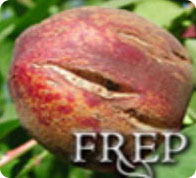Nutrient Management Tools
Avocado Nitrogen and Potassium Model
This nitrogen and potassium model for avocados was developed by Richard Rosecrance and Carol J. Lovatt for their project "Management Tools for Fertilization of the ‘Hass’ Avocado." Access the Avocado Nitrogen and Potassium Model here.
Chemigation in Tree and Vine Microirrigation Systems
This UC ANR publication was created by Larry Schwankl and Terry Prichard as part of the project "Uniformity of Chemigation in Microirrigated Permanent Crops." This guide explains how the application of chemicals such as herbicides, pesticides, and soil amendments such as gypsum can be injected through irrigation systems. Included is a discussion of various types of injection equipment, capacity and pricing considerations, materials that can be injected, and timing and duration to achieve optimal results. Order a copy of this guide online.
Compost Production and Utilization: A Grower's Guide
Compost is the result of a dynamic, biological process of decomposing organic matter. It is used to improve soil properties and to supply nutrients. The purpose of this publication is to provide farmers and agricultural advisors with practical information on the production and use of compost, including an understanding of the benefits of compost, the basic biological processes involved in its production, and a technique to determine the proportions of various materials needed to make a quality blend. Access the compost guide
CropManage
In the ongoing FREP project "Irrigation and Nitrogen Management Web-based Software for Lettuce Production," Michael Cahn is developing a program called Crop Manage. CropManage is an online database-driven tool that assists growers and farm managers in determining water and nitrogen fertilizer applications on a field-by-field basis. The software automates steps required to calculate crop water needs from CIMIS ET data, and estimates fertilizer N needs for lettuce using quick N test data and models of crop N uptake. The web application also helps growers track irrigation schedules and nitrogen fertilizer applications on multiple fields and allows users from the same farming operations to view and share data. Read more about CropManage.
Evaluation of Low-Residue Cover Crops to Reduce Nitrate Leaching, and Nitrogen and Phosphorous Losses from Winter Fallow Vegetable Production Fields in the Salinas Valley
Richard Smith and Michael Cahn produced a video related to their project "Evaluation of Low-Residue Cover Crops to Reduce Nitrate Leaching, and Nitrogen and Phosphorous Losses from Winter Fallow Vegetable Production Fields in the Salinas Valley." View the video.
Integrating Agriculture and Fertilizer Education into California’s Science Framework Curriculum: Grades K-12
The educational material developed in the project "Integrating Agriculture and Fertilizer Education into California’s Science Framework Curriculum: Grades K-12" is available from the California Foundation for Agriculture in the Classroom. The following lesson plans were funded in part by FREP:
- What do Plants Need to Grow? Grades 2-4
- How Much is Too Much? How Little is Too Little? Factors that Affect Plant Growth: Grades 5-8
- The Interrelationships of Soil, Water and Fertilizers and How They Affect Plant Growth: Grades 9-12
Nitrogen Fertilization Recommendation Model for Almonds
Nitrogen is one of the primary fertilizers used in California almond orchards to maintain productivity. Excessive amounts of N fertilizers applied can result in groundwater contamination without improving crop yield or maximizing grower returns. Almond N demands can be predicted by considering a number of parameters, including yield history, current conditions, and previous N applications. By timing N applications with periods of greatest demands, considering all other N sources, and matching N application rates with crop load, growers can minimize N losses from the orchard system and optimize almond fertilization. This model is a user-friendly program and can be an excellent tool for almond growers and advisors. Access the almond N model.
Peach, Nectarine, and Plum Sand Tank Studies
In 1999, 60 large plastic tanks were buried in the ground at UC Kearney Agricultural Research and Extension Center. The tanks were filled with clean sand and planted with peach, nectarine and plum trees. From 2000 until 2010, numerous nutrition and fertilization experiments were conducted on these trees, including the FREP funded projects "Improving the Procedure for Nutrient Sampling in Stone Fruit Trees" and "The Effect of Nutrient Deficiencies on Stone Fruit Production and Quality" by R. Scott Johnson. Read more about the peach, nectarine, and plum sand tank studies.
UC Nutrient Management for Vegetable, Fruit and Nut Crops
The UC Nutrient Management for Vegetable, Fruit and Nut Crops website was developed by Tim Hartz as part of the FREP funded project "Comprehensive Nutrient Management Website for the California Horticultural Industry." The website allows users to access nutrient management information by crop or by topic, and also features a number of learning modules. These learning modules are designed to provide in-depth training on specific topics relating to soil fertility and irrigation management of horticultural crops. Access the UC Nutrient Management website.
Western Fertilizer Handbook, Turf & Ornamental Edition
The Western Fertilizer Handbook, Turf & Ornamental Edition was developed with FREP support. This book presents fertilization, nutrient management, and related topics based on the fundamentals of biological and physical sciences. The information in this book is set in a horticultural context so that it can be more easily understood by the student and the amateur horticulturist and more rapidly applied by the industry professional. Order a copy of the Western Fertilizer Handbook, Turf & Ornamental Edition.
Contact Us
1220 N Street
Sacramento, CA 95814
916-900-5022
Email: frep@cdfa.ca.gov
Quick Links


